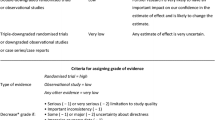Summary
Due to a higher incidence of recurrent hernia after Bassini's herniorrhaphy compared to the laparoscopic mesh implantation technique, one may assume that the former procedure fails to produce sufficient reinforcement of the inguinal region. The aim of our study was to determine the reasons for these results by using static measurements in mathematical models of these different surgical approaches. From a static point of view, based on anatomic findings we calculated the distribution of forces after laparoscopic preperitoneal mesh placement with and without a gap, and Bassini's technique. For tension calculations we used a computer-based finite element (FE) static program. 10N were applied on each FE in all models. The most stressed area in the Bassini model is the surrounding tissue located immediately adjacent to the inguinal canal with a 6.7 fold of the applied load. This concentration of stress results from an unequal distribution of force in the Bassini model. The peak stress in the gap mesh model, on the other hand, is 2.1 fold of the applied load in the area surrounding the gap, compared to the mesh model without tension elevation (in any mesh area). The poor stability in the Bassini model may be a reason for the higher recurrence rate of inguinal hernia. From the static point of view we recommend mesh implants for inguinal hernia repair. Preperitoneal placement of a mesh without a gap is the preferable method.
Similar content being viewed by others
References
Amid PK, Shulman AG, Lichtenstein IL (1994) Die Herniotomie nach Lichtenstein. Der Chirurg 65:54–58
Böhm A, Fritsch R (1993) Statik 1, Statik 2. Manz, Wien
Cochran GVB (1982) A primer of orthopaedic biomechanics. Churchill Livingstone, New York
Copf F, Holz U (1994) Knochen als dynamisches Prinzip. Thieme, Stuttgart
Dion YM, Laplante R, Charara J, et al (1994) The ifluence of the number of endoclips and of mesh incorporation on the strength of an experimental hernia patch repair. Surg Endosc 8:1324–1328
Eibl J, Obrecht H, Wriggers P (1992) Finite Elemente. Ernst & Sohn, Berlin
Felix EL, Michas CA, Gonzalez MH (1995) Laparoscopic hernioplasty. Surg Endosc 9:984–989
Horgan LF, Shelton JC, O'Riordan DC, et al (1996) Strengths and weaknesses of laparoscopic and open mesh inguinal hernia repair: a randomized controlled experimental study. Br J Surg 83:1463–1467
Keith A (1923) On the origin and nature of hernia. Br J Surg 11:455
Korman JE, Hiatt JR, Feldmar D, et al (1997) Mesh configurations in laparoscopic extraperitoneal herniorrhaphy. A comparison of techniques. Surg Endosc 11:1102–1105
Lichtenstein IL, Shulman AG, Parviz K, et al (1989) The tension-free hernioplasty. Am J Surg 157:188–193
Phillips EH, Arregui M, Carroll BJ, et al (1995) Incidence of complications following laparoscopic hernioplasty. Surg Endosc 9:16–21
Rath AM, Zhang J, Amouroux J, Chevrel J-P (1996) Les prothèses pariétales abdominales. Étude biomécanique et histologique. Chirurgie 121:253–265
Schneider E (1997) Biomechanik des menschlichen Bewegungsapparates. Springer, Berlin Heidelberg New York
Schumpelick V (1990) Hernien. Enke, Stuttgart
Schlossnickel B (1995) Die Biokompatibilität des Polypropylennetzes — Experiment und klinischer Einsatz. In: Bittner R (ed) Laparoskopische Hernioplastik. Hippokrates, Stuttgart, pp 77–80
Tera H, Aberg C (1976) The strength of tissue against individual sutures in structures involved in the repair of inguinal hernia. Acta Chir Scand 142:309–314
Töns CH, Muck-Töns A, Schumpelick V (1993) Leistenhernienchirurgie in Deutschland 1992: Eine Umfrage an 1656 deutschen Kliniken. Chirurg 64:635–641
Author information
Authors and Affiliations
Rights and permissions
About this article
Cite this article
Hollinsky, C., Rusnov, B., Hollinsky, K.H. et al. Static tension measurements of inguinal hernia repair models. Hernia 3, 11–14 (1999). https://doi.org/10.1007/BF01576733
Received:
Accepted:
Issue Date:
DOI: https://doi.org/10.1007/BF01576733




